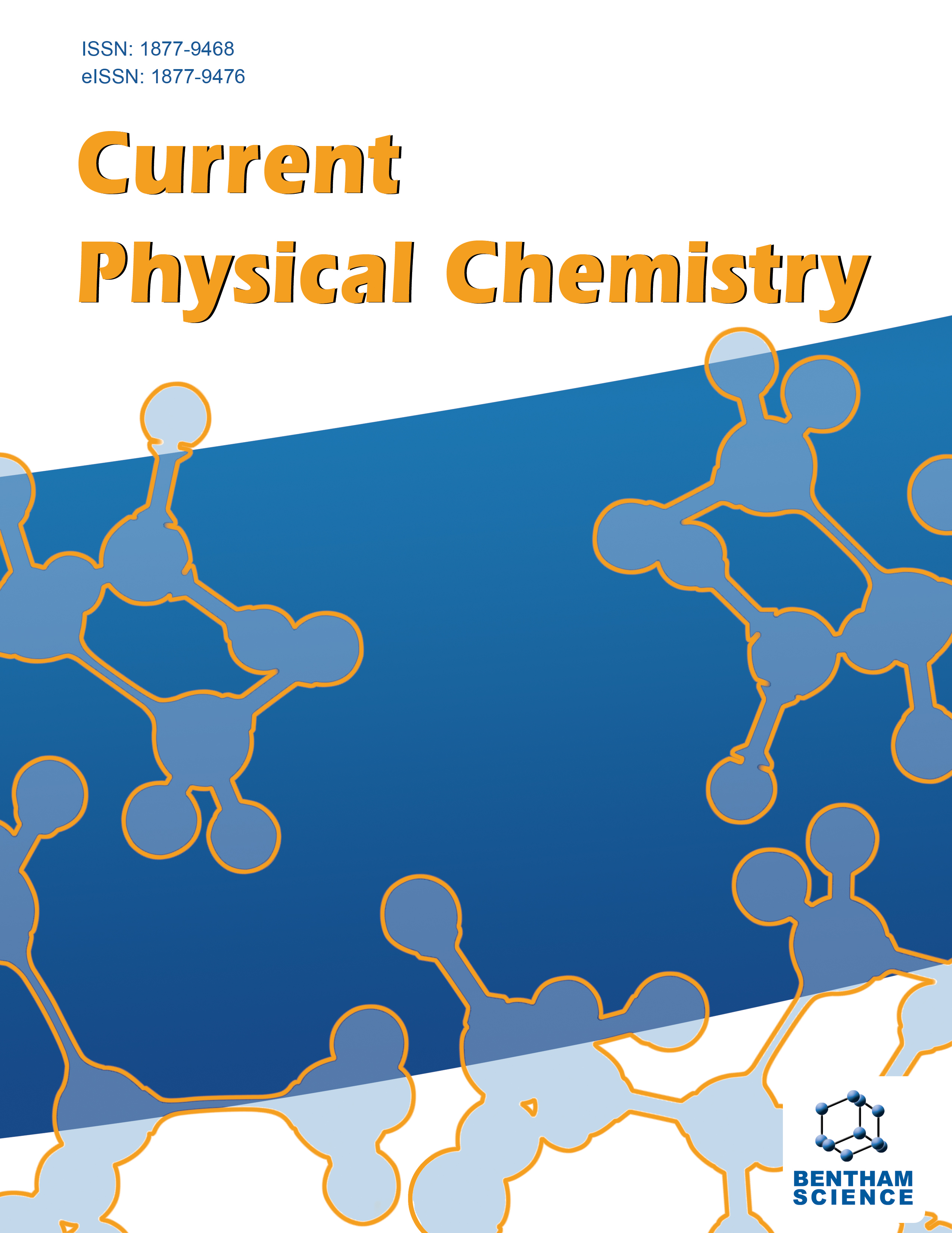- Home
- A-Z Publications
- Current Physical Chemistry
- Previous Issues
- Volume 7, Issue 2, 2017
Current Physical Chemistry - Volume 7, Issue 2, 2017
Volume 7, Issue 2, 2017
-
-
On the Application of Conceptual Density Functional Theory to Atomic and Molecular Domain
More LessBy Nazmul IslamObjective: Based on the findings that the Conceptual Density Functional Theoretical descriptors have applications in the real world of chemistry and physics, in this paper, we applied the said descriptors to evaluate some very important atomic and molecular properties. Method: We proposed the methods of calculation of equalized molecular electronegativity, equalized molecular electrophilicity, and equalized molecular nucleophil Read More
-
-
-
Quantum Information Measures and Their Use in Chemistry
More LessBackground: The resultant measures of the information content in molecular electronic states are revisited. In these overall measures the current-related terms complement the probability functionals of classical Information Theory. The nonclassical Shannon entropy reflects the average magnitude of the state phase distribution, while the related current term in the complementary Fisher measure accounts for the averag Read More
-
-
-
Electronegativity and Hardness: Linear Isoelectronic Trends
More LessBackground: Excellent linear correlations exist between isoelectronic values of square root of the electronegativity measure i.e. {(I+A)/2}1/2 and the measure of hardness, (I-A)/2 in eight out of the first ten isoelectronic sequence (H-Ne); the determination coefficients are nearly one. Method: For He and Ne isoelectronic series, with inert gas configuration, the plots between {(I+A)/2}1/2 and (I-A)/2 are found to be nonlinear. For Read More
-
-
-
Evaluation of the Protonation Energy of Molecules using Conceptual Density Functional Theoretical Reactivity Descriptors
More LessAuthors: Sandip K. Rajak, Nazmul Islam and Dulal C. GhoshObjective: In this work we have suggested the model for the evaluation of the proton affinity, PA of molecules and also calculated theoretical PA of some molecules using some CDFT descriptors. Method: A validity test of the model is performed by comparing the protonation energies of as many as 45 molecules computed using the model proposed in this work vis-is their corresponding experimental counterparts. Conclusion: The Read More
-
-
-
Chemical Field Theory: The Inverse Density Problem of Electronegativity and Chemical Hardness for Chemical Bond
More LessThe anharmonic chemical field potential, V (∅,χ ,η), is expressed in terms of the electrostatic potential, ∅, the electronegativity, χ, and the chemical hardness, η, density functionals, as they relate the electron density functional, ρ, and chemical bond formation by quantum field/operators [observable/measurable quantities (physical observables)].
-
-
-
Conceptual Density Functional Theoretical Investigation of the Corrosion Inhibition Efficiencies of Some Molecules Containing Mercapto (-SH) Group
More LessAuthors: Savas Kaya, Burak Tüzün and Cemal KayaObjective: In the present study, corrosion inhibition efficiencies of some molecules containing mercapto group (-SH) such as mercaptopryimidine (MP), 6-mercaptonicotinic acid (6-MN), thiophenol (TP), 3-mercaptobenzoic acid (3-MB), mercaptoacedic acid (MAA), mercaptopropionic acid (MPA) were investigated. Method: All calculations related to these molecules were performed in gas phase and at various level of B3LYP and H Read More
-
-
-
Comments on Electronegativity Equalization with Pauling Units
More LessAuthors: Savas Kaya and Cemal KayaObjective: It is known that the electronegativities of functional groups can be significantly to used predict the reaction mechanisms and to explain inductive effects of chemical compounds. Method: Bratsch equation is one of the most important equations used to calculate the electronegativities of functional groups. Conclusion: In the present study, some important comments and contributions related to Bratsch's group electrone Read More
-
-
-
Effect of Molecular Hardness on Ionic Characters, Bond Lengths, Bond Force Constants and Melting Points of Alkali Halides
More LessAuthors: Savas Kaya, Cemal Kaya and Ilkay UĦ#159;urluBackground: Chemical hardness is one of the most useful conceptual constructs of chemistry and physics and this quantity is an important tool in the understanding of behavior of chemical species. Method: In the present report, we have disclosed about the effect of molecular hardness on chemical properties like ionic character, bond length, bond force constant and melting point for alkali halides that are among the most f Read More
-
-
-
South Italy Local Grapes cultivar as a Source of Natural Sensitizers in Dye-sensitized Solar Cells
More LessAuthors: Sandro Lattante, Giuseppe De Benedetto, Daniela Rizzo and Marco AnniObjective: We show that anthocyanines extracted from 3 different local cultivar of grapes characteristic of the South Italian region named ″Salento″ can effectively act as naturefriendly and eco-sustainable sensitizers in Dye-sensitized Solar Cells (DSSC) type devices. Methods: The natural pigments have been extracted in a simple way immersing both the whole fruits and the fruit epicarps in methanol and in an ultrasonic b Read More
-
-
-
Photo-catalytic Degradation of Methylene Blue Dye in Water Over Mn-N co-doped ZnS Nanoparticles
More LessAuthors: Dagme Zewde, Om P. Yadav and Abi M. TaddesseObjective: The reported work was aimed to remove methylene blue dye, a toxic chemical, from its aqueous solution by photo-catalytic degradation technique and to observe the effect of doping Mn and N on photo-catalytic activity of ZnS. Method: Nanosize ZnS, Mn-doped-ZnS, N-doped-ZnS and Mn-N co-doped ZnS were prepared by chemical co-precipitation method and characterized these using XRD, TEM and UV - visible spectr Read More
-
Most Read This Month
Article
content/journals/cpc
Journal
10
5
false
en


